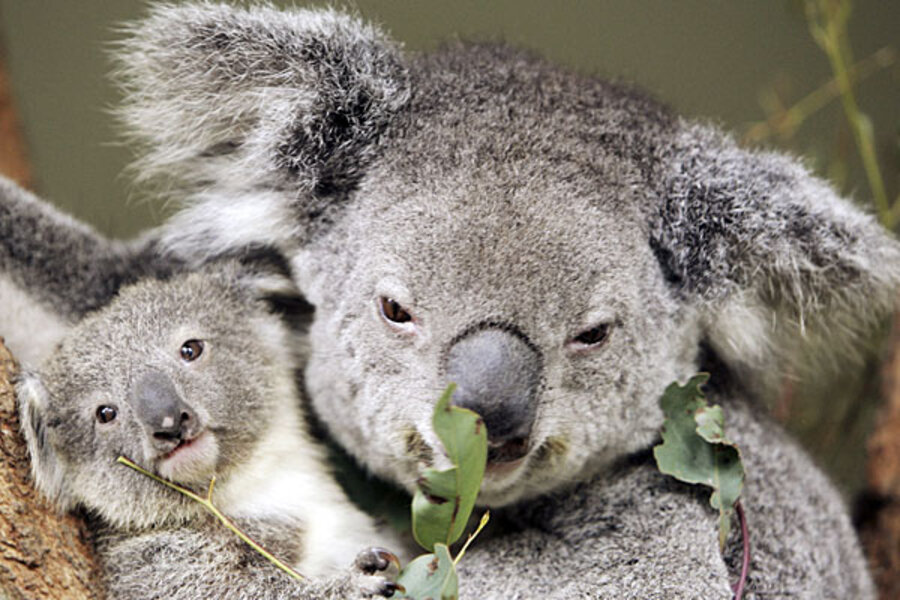Global warming: Are these the Top 10 species most at risk?
That rising temperatures are threatening thousands of plant and animal species is hardly news. But the International Union for Conservation of Nature (IUCN), seeking to bolster support for tough new restrictions on greenhouse gas emissions at the Copenhagen climate change talks, is banking that concern for the most threatened species will generate the political support for action.
On Monday, the IUCN released a list of 10 species (see below) it says are among the most threatened by climate change, and in doing so returned to one of the most popular themes in the global warming activist's playbook: Rather than focusing on the complex web of interactions between species and climate, the systems that support life on this planet, they're putting the emphasis on the cute and cuddly.
Sure, the list includes Staghorn coral, one of the most important tropical reef builders that is threatened by ocean acidification and the majestic Quiver Tree of southern Africa, which lives for more than 300 years but appears to be in the middle of a mass die-off because of rising temperatures. But all the other species on the list fall into the "charismatic fauna" category.
That people identify more with life that pleases our sense of aesthetics, generally thanks to large eyes and fur, has long been understood. That's why the World Wide Fund for Nature (WWF) uses a panda as its logo – and not, say, the Copepod, a threatened crustacean that is far more ecologically important than our bamboo-munching friend.
"Humans are not the only ones whose fate is at stake here in Copenhagen," report coauthor Wendy Foden said in the IUCN's press release. "Some of our favorite species are also taking the fall for our CO2 emissions.
Here are the five "cutest" on the top 10 list and what's at stake:
1. The koala.
Perhaps the iconic Australian animal, the koala, with its floppy ears, furry coat, and funny black nose been a favorite of plush toy makers. The IUCN says the koala, which isn't as cute up close (the marsupials can be irritable and sometimes bite or claw), is threatened because rising atmospheric carbon dioxide (CO2) will lower the nutrient quality of eucalyptus leaves, which the koala snacks on exclusively. The increasing frequency of droughts is also forcing Koalas from the eucalypts they inhabit more often, leaving them vulnerable to ground based predators -- particularly the introduced domestic dog.
2. The emperor penguin
This majestic bird is, like the polar bear, among the most immediately threatened species due to the retreat of antarctic polar pack ice. Star of award-winning documentary "The March of the Penguins," the male of the species spends the long southern winter with his belly draped over an egg, before trudging 70 miles over the Polar pack ice to his ocean feeding grounds where he dines on mostly krill and squid. But krill and squid populations are dropping, and with less ice to raise their young on, populations of the penguins are intensely threatened.
3. The ringed seal
Another of our threatened polar creatures, highlighted by the IUCN perhaps because unlike leopard seals, holy terrors to penguins with razor sharp teeth, the ringed seal of the northern Arctic is primarily a fish eater. They're already showing signs of stress due to the earlier break up of the polar pack ice each spring, which they rely on to rear their young. Pups are being separated from their mothers at lower weights, leaving them more at risk of starvation and to predation. The ringed seal is also a favorite snack of the greatest examples of threatened charismatic megafuana -- the polar bear.
4. The arctic fox
This tiny canid is one of the most important land-based predators in the Arctic. Once extensively hunted for its snow-white winter pelt, it's now threatened by warming temperatures that the IUCN predicts will soon help the boreal forest migrate north, displacing the tundra the fox relies on. The almost equally cute red fox has already been moving north, and as a superior hunter it is displacing the arctic fox where they come into contact.
5. The clown fish.
Not even Nemo is safe. This iconic coral reef dweller, which lives in the stinging tendrils of sea anemones, is in danger because of the impact of ocean acidification on reef building and because, the IUCN says, acidification is hurting the sense of smell they rely on to find suitable anemone hosts. The IUCN report says that while clown fish may migrate to suitable habitat and survive as a species, that the small fish generally struggle to migrate over large distances.





